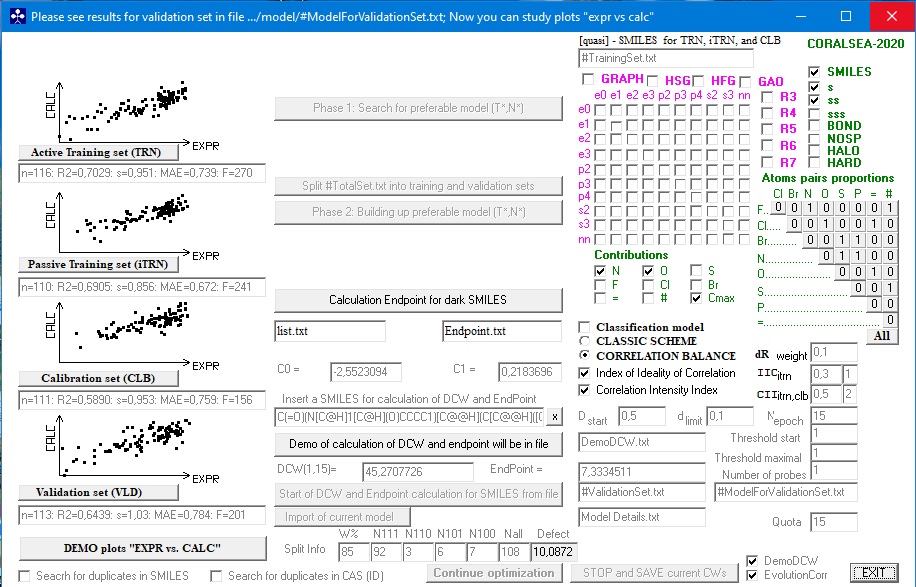INTRODUCTION
That is QSPR/QSAR model?

The CORAL is freeware to build up quantitative structure-property activity relationships (QSPR /QSAR).
is freeware to build up quantitative structure-property activity relationships (QSPR /QSAR).
The CORAL  can be used in Windows platforms.
can be used in Windows platforms.
The CORAL gives possibility to build up models for endpoints related to nanomaterials.
gives possibility to build up models for endpoints related to nanomaterials.
The model gives possibility to estimate (predict) numerical value of endpoint for a substance that has not been examined in experiment.
One can calculate by the least squares method a model E = C0 + C1*D.
These QSPR/QSAR models are one-variable correlations between an endpoint and descriptors calculated with SMILES (simplified molecular input line entry system).
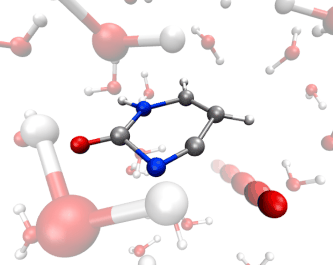 CORAL
CORAL![]() is system of software and
databases. Input for CORAL is data set in form of strings.
is system of software and
databases. Input for CORAL is data set in form of strings.
Each string contains four components:
[TypeSet. ID. SMILES. Endpoint ]
TypeSet :+/-is an indicator of sub-training/calibration sets ; # is an indicator of test set.
ID: is some indicator of a substance, e.g. CAS number.
SMILES: is, e.g. CCC(C), N#CC, c1cccc1, etc.
quasi-SMILES: quasi-SMILES contains fragment which is the traditional SMILES. Quasi- SMILES can be defined with sequences of symbols in square brackets, e.g. [aAl2O3][b39,7][c267][d36,3][e64,7][f-17,345][g-1,51][h-9,81][i5,67][jMTT][kHCMEC][LHuman][mBlood][nNormal][o24][p0,001];
or O=S(=O)(c1ccccn1=O)Cc2ccccc2.[Dark][Low Conc] etc.
Endpoint: is some numerical value, e.g. 0.15; 2.78, -134.7, etc.
Using sub-training set and calibration set, the CORAL is building up a model for an endpoint:
is building up a model for an endpoint:
Endpoint = C0 + C1*Descriptor(SMILES)
Endpoint = C0 + C1*Descriptor(quasi-SMILES)
Formally, the model can be used for arbitrary external substances, but preferably if the external substance falls into the applicability domain.
Screenshot 2023, 2024
CORAL-2023
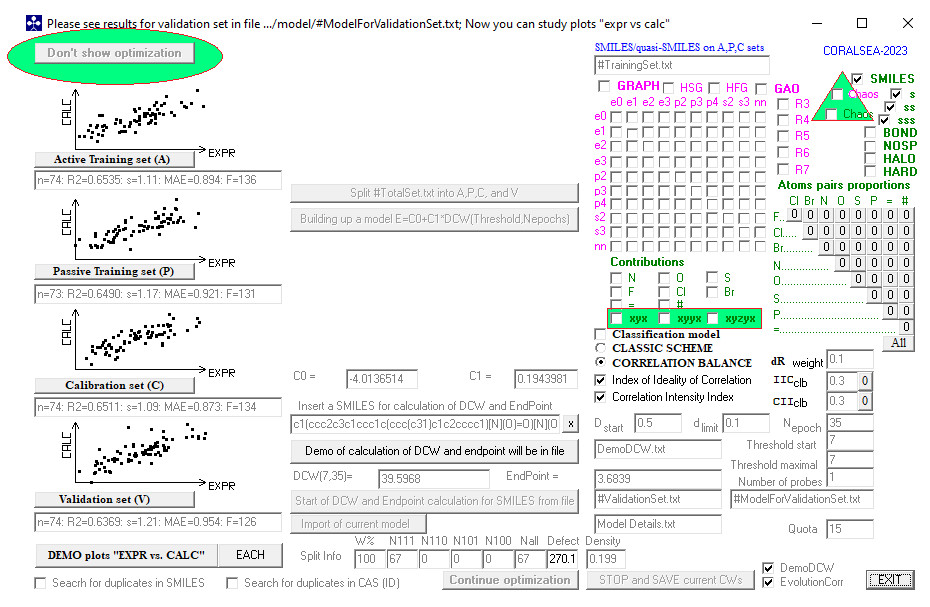
CORAL-2025
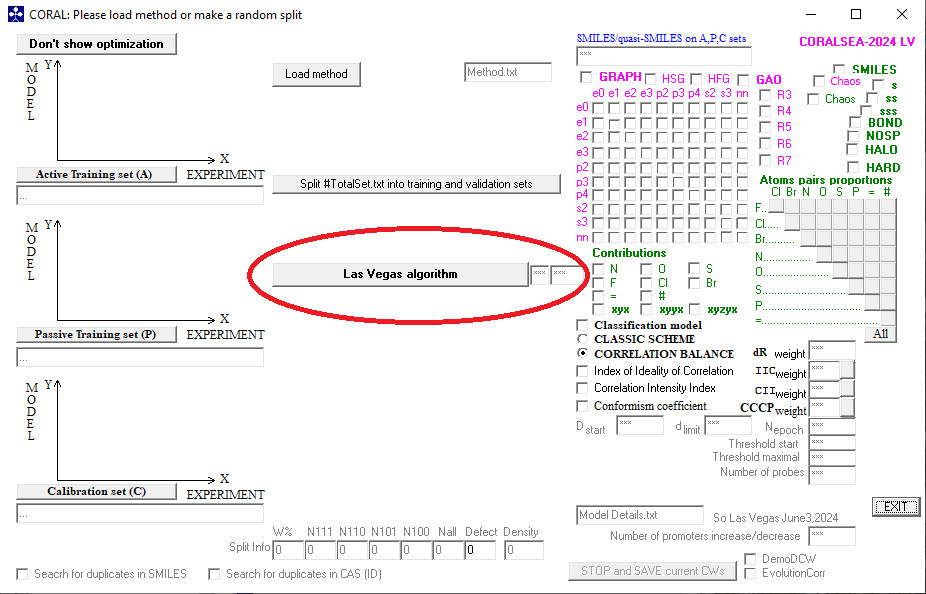
Screenshot 2016-2020
CORAL-2016
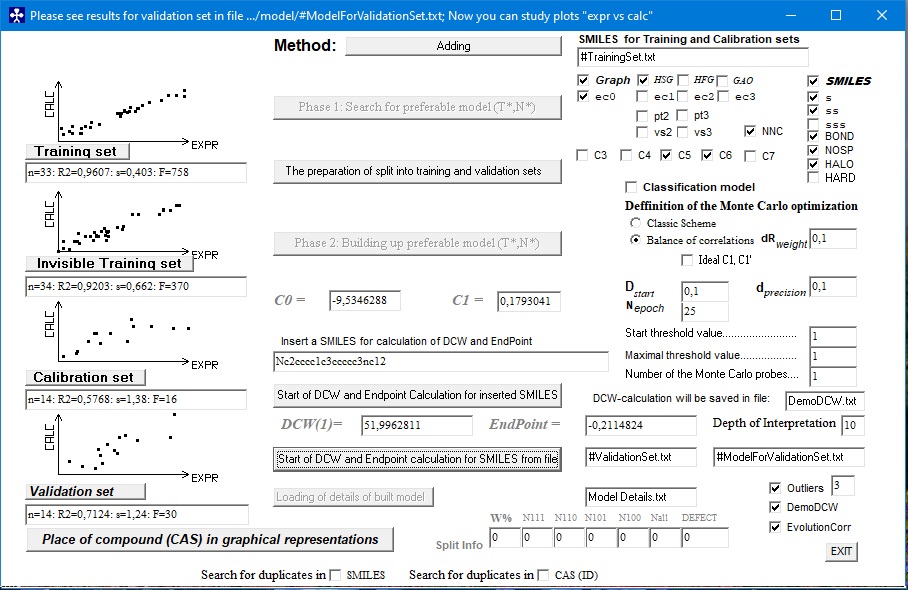
CORAL-2017
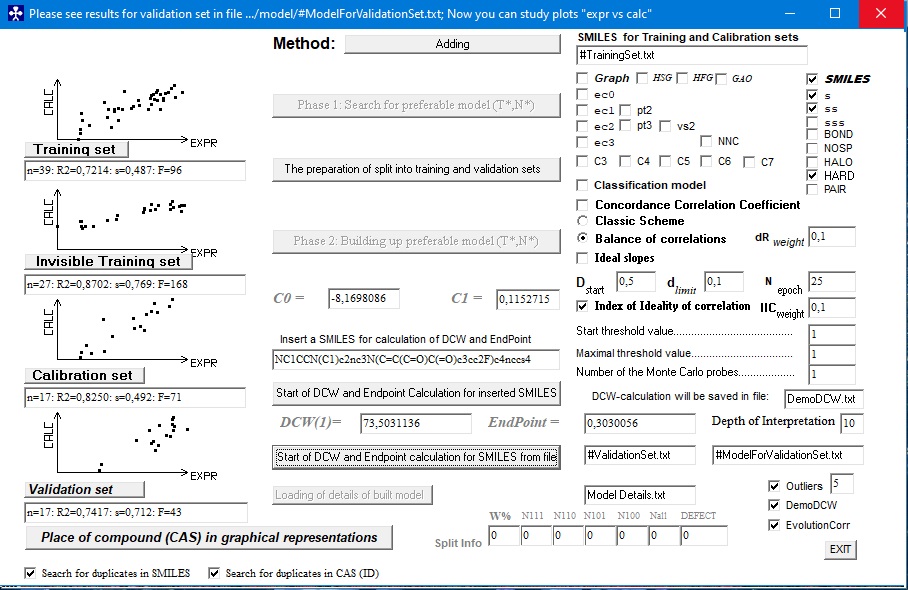
CORAL-2019
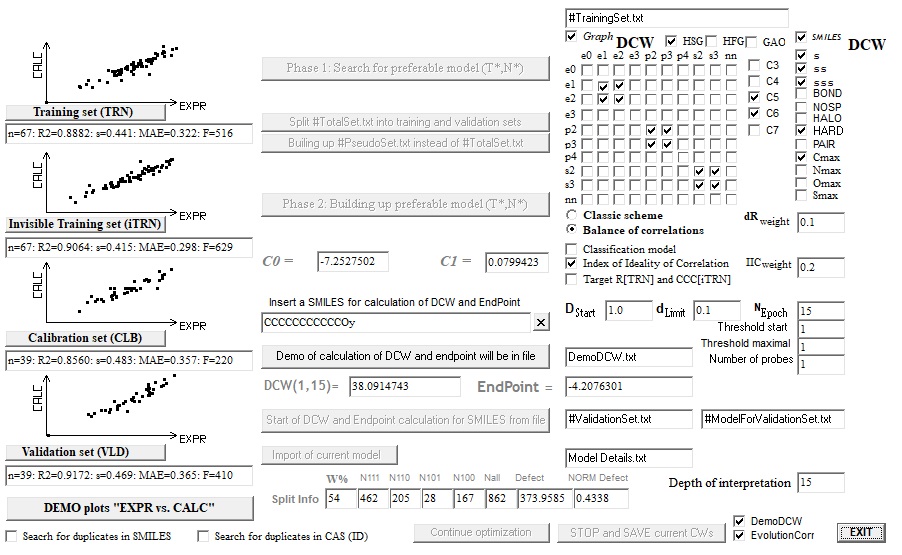
CORAL-2020
